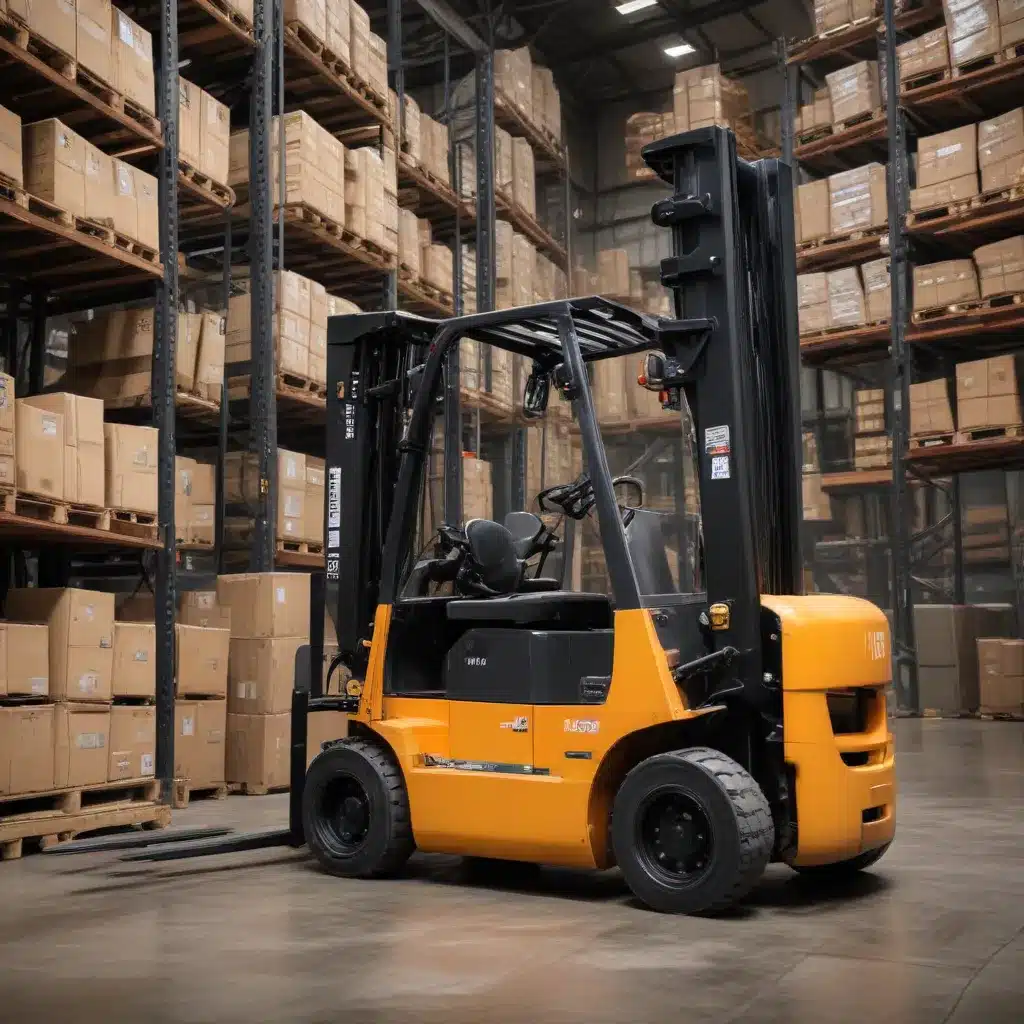
The Importance of Forklift Maintenance in Warehouse Operations
Efficient warehouse operations are crucial for businesses across industries, from distribution to manufacturing and food processing. The smooth functioning of a warehouse relies heavily on the proper management of equipment, particularly forklifts, which are a fundamental part of material handling. Traditional maintenance practices often follow a reactive approach, addressing issues only when they arise, leading to costly repairs, unexpected downtime, and decreased productivity. However, the emergence of predictive maintenance has revolutionized equipment lifecycle management, enabling businesses to optimize operations, increase efficiency, and reduce costs.
HCO Innovations, a leading management consulting firm specializing in warehouse optimization and forklift fleet management, understands the importance of predictive maintenance in achieving operational excellence. Predictive maintenance involves using advanced technologies and data analytics to monitor the condition of equipment in real-time, allowing for the early detection of potential issues. By utilizing cutting-edge sensors, data collection systems, and artificial intelligence algorithms, businesses can collect data on various parameters such as temperature, vibration, fluid levels, and performance indicators. This data is then analyzed to identify patterns, anomalies, and potential failures. With this valuable insight, maintenance teams can proactively schedule repairs and preventive maintenance, minimizing downtime and maximizing equipment availability.
The Benefits of Predictive Maintenance Strategies
Implementing a predictive maintenance strategy offers numerous benefits for businesses in warehouse operations:
-
Increased Uptime and Reliability: By proactively addressing issues before they lead to breakdowns, predictive maintenance helps maximize equipment availability and reduces unplanned downtime, ensuring continuous operations.
-
Cost Savings: Predictive maintenance can significantly reduce maintenance and repair costs by preventing expensive emergency repairs and minimizing the need for equipment replacement. It also helps optimize spare parts inventory and labor utilization.
-
Improved Safety: Predictive maintenance helps identify and address potential safety hazards, such as worn components or malfunctioning safety features, ensuring a safer working environment for employees.
-
Extended Equipment Lifespan: By maintaining equipment in optimal condition, predictive maintenance strategies can extend the useful life of forklifts and other material handling equipment, maximizing the return on investment.
-
Enhanced Operational Efficiency: With real-time monitoring and data-driven maintenance planning, businesses can streamline their warehouse operations, improve productivity, and achieve better overall equipment effectiveness (OEE).
Implementing a Successful Predictive Maintenance Strategy
Implementing a predictive maintenance strategy involves several key steps:
-
Assess Your Current Maintenance Practices: Evaluate your existing maintenance programs, identifying areas for improvement and opportunities to leverage predictive maintenance techniques.
-
Identify Critical Assets: Prioritize the equipment and systems that are most crucial to your warehouse operations, focusing your predictive maintenance efforts on these high-impact assets.
-
Implement Condition Monitoring Sensors: Deploy advanced sensors and data collection systems to continuously monitor the condition of your forklift fleet and other critical equipment.
-
Analyze Equipment Data: Utilize data analytics and machine learning algorithms to identify patterns, detect anomalies, and predict potential failures based on the data collected by your condition monitoring sensors.
-
Develop Predictive Maintenance Plans: Integrate the insights gained from data analysis into comprehensive maintenance plans, scheduling proactive interventions to address issues before they disrupt operations.
-
Continuous Improvement: Regularly review and refine your predictive maintenance strategies, incorporating feedback, lessons learned, and advancements in technology to optimize your approach over time.
HCO Innovations has been at the forefront of implementing predictive maintenance solutions for its clients. Leveraging their expertise in warehouse optimization and forklift fleet management, they provide comprehensive services that enable businesses to enhance their operational efficiency and achieve significant cost reductions.
By partnering with HCO Innovations, businesses can benefit from a collaborative approach that combines advanced cost-tracking software with a “boots on the ground” consulting approach. Their team of experts conducts warehouse layout evaluations, safety assessments, and offers turnkey maintenance solutions tailored to the specific needs of each client. HCO Innovations’ predictive maintenance solutions empower businesses to make informed decisions regarding maintenance activities, resulting in increased uptime, reduced costs, and optimized warehouse operations.
The Future of Forklift Maintenance: Embracing Technological Advancements
As technology continues to advance, the future of equipment lifecycle management holds even greater promise. With the integration of Internet of Things (IoT) devices and advanced analytics, businesses can further optimize their maintenance practices. IoT devices can provide real-time feedback and diagnostics on equipment performance, remotely monitoring critical parameters. This enables businesses to assess equipment conditions and performance from anywhere, anytime, and make data-driven decisions accordingly. Furthermore, machine learning algorithms can continuously learn from data patterns and provide increasingly accurate predictions regarding equipment failures. This facilitates proactive maintenance planning, reducing downtime and maximizing operational efficiency.
With the rapid advancements in technology and the expertise of consulting firms like HCO Innovations, predictive maintenance is set to revolutionize equipment lifecycle management. Businesses that embrace this approach can gain a competitive edge by maximizing their operational efficiency and reducing material handling costs.
In conclusion, predictive maintenance offers significant benefits for businesses in warehouse operations. By utilizing advanced technologies and data analysis, businesses can proactively address potential equipment failures, reduce costs, increase uptime, and improve safety. Implementing a predictive maintenance strategy, with the guidance of experienced consulting firms like HCO Innovations, enables businesses to optimize their equipment lifecycle management and enhance overall operational efficiency. As the industry continues to evolve, embracing the power of condition monitoring sensors and data-driven maintenance will be crucial for businesses seeking to maintain a competitive edge in the fast-paced world of warehousing and logistics.

